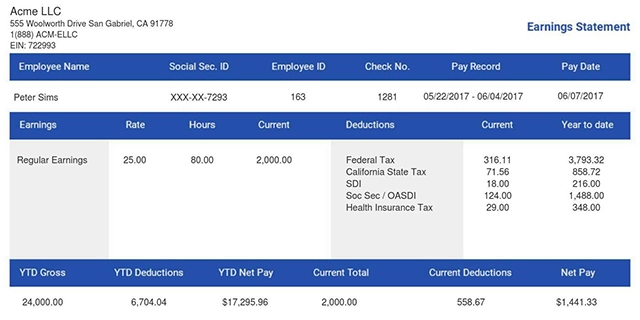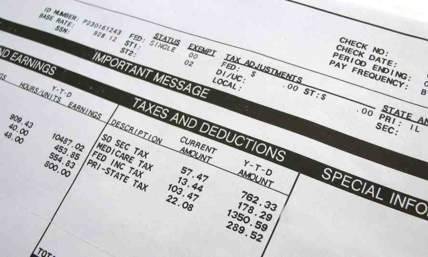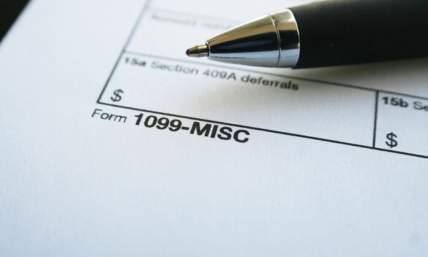A Pocket Guide to Time Clock Rounding
Time clock rounding is commonly used in the workplace to simplify a business's time tracking practice. It is a specific process that helps employee work hours make more sense. This means that, in essence, time clock rounding is a trick of the industry that allows employers to simplify payroll, and invoicing, and streamline the calculation of their employee wages.
It is, therefore, a little surprise what a huge benefit time clock rounding can have on a small business. Not only does it save employers time, but it also takes a lot of the convolution out of payroll. This, in turn, will save an employer money, and not just time. In this article, we will highlight exactly what time clock round, helping you to decide whether it’s the right move for your business or not.

What Is Time Clock Rounding?
Time clock rounding describes a system that rounds an employee’s hours up or down to a whole and workable time. This is done in a calculated way that employs set increments to make it fair for all. The beauty of time clock rounding is that you can set the increments depending on your type of business.
For instance, employee hours can be rounded to the nearest 5-minute or 15-minute mark depending on how you see fit. Under the Fair Labor Standards Act it is up to the employer to correctly record and store their employee’s work hours. Time clock rounding makes this a more digestible task for all.
Why is Time Clock Rounding Necessary?
Time clock rounding can be considered a necessity for employers for a few reasons and we have listed the most important ones below.
-
Payroll
Figuring out small portions of logged employee hours can be a painstaking task for employers. Imagine trying to compile a minute here, a minute there, 30 seconds over there when finalizing the payroll for multiple employees? You’re right, that is tough work. This is why time clock rounding is so useful as it helps employers to simplify logged hours and translate them into their weekly or monthly employee payroll.
-
Calculate Billable hours
This point relates specifically to employers that are required to send billable hours to a client. Rounding the client’s logged hours to a nice and neat amount is a more practical way to invoice. It makes little sense for a business opener to bill a client for, say, eight hours and seven minutes of completed work. Time clock rounding, therefore, will keep their accounts in order and look more eligible from a professional standpoint.

-
Clock In/ Out Early
Another massive plus of time clock rounding for employers is to prevent their not-so-honest employees from clocking in prior to their stated working hours. This is a regular employee practice in larger companies with only one clock in/ out machine.
Employees may feel like it is their right to punch in as soon as they get to work but forget about the 10 minutes that they take to have a coffee and catch up on the goss. Even though it is true that they have gotten to the workplace early, if they don’t actually start their work until the start of their shift, then employers believe they shouldn’t be paid for that period in between. Time clock rounding alleviates this issue by rounding the time punched on the machine closer to an employer’s actual start time.
Also read: Tips To Improve Employee Morale Remotely
What Is 5-Minute Time Clock Rounding?
The most precise type of time clock rounding is the 5-minute way. Rounding down or up to the closest 5-minute mark will ensure the least amount of discrepancies for all concerned. The 5-minute rounding principle is based on a 2 ½ minute split. This means that if a person clocks in at 10:03 their start time would round up to 10:05.
Also read: Branding Your Business For 2022
What Is 6-Minute Time Clock Rounding?
6-minute time clock rounding is related to the hour as a whole 60-minute period. This method breaks down an hour into 10 six-minute increments. So, for example, if an employee clocks in at 8:10, their time sheet should be rounded up to 8:12. This may sound confusing, but when it comes time to pay that employee, it will make a whole lot of sense.
Also read: 5 Ways To Keep Track Of Your Businesses Income And Expenses
Is Time Clock Rounding Legal in the U.S?
Time clock round is legal in the U.S, however, there are laws that surround its application. The Department of Labor has set out a detailed guideline for how employers can use time clock rounding and it must not be altered.
One of the biggest stipulations laid out by the Department of Labor is to do with the amount of time that an employer can legally round up or down. 15 minutes is the maximum amount of time that an employer can alter their employee’s logged hours.
Another requirement offered by the Department of Labor that is directly related to the 15-minute maximum is the 7-minute rule. Think of the 7-minute rule as the guide that helps you to understand the rounding process. For instance, if an employee “clocks in” at 11:07, time clock rounding will take this number down to a nice and neat 11:00. If, however, that same employee was to punch in at 11:08, then their start time would be rounded up to 11:15.
One of the other big no-no’s for employers is ensuring that the time clock rounding is always leaning in their favor. The time clock rounding administered in a business should only ever stay neutral or in favor of employees and never the other way. It is, therefore, illegal for an employer to always round their employee's time sheets down and what is in their interest.
Also read: Use A Customised Invoice For Your Business

Conclusion
So there you have it. You now know exactly what time clock rounding is and how it related to your work life. Whether you are an employer or an employee it's good to know the rights and responsibilities that surround time clock rounding so that everyone feels like the system works for them, and not against them.
If you haven't got the most efficient way to produce pay stubs, then check out our pay stub maker today. So simple and convenient!
Also read: 8 Signs Your Invoicing Isn’t Right















